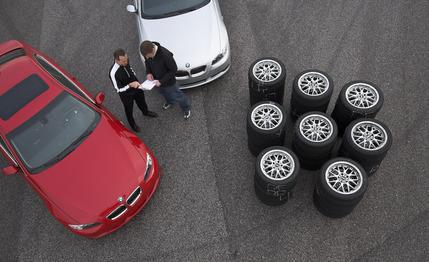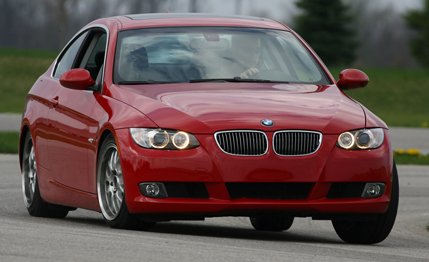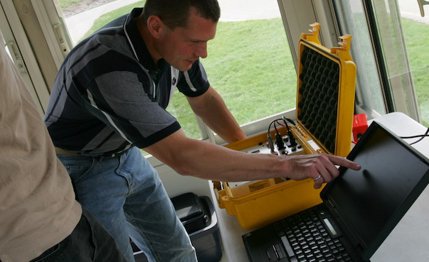
 Comparison Tests
Comparison Tests
When in doubt, it seems, add adjectives. Just as the EPA tacked on “ultra” and then “super” in creating ever-more-stringent-sounding categories for its low-emissions vehicle ratings, the tire business is continuously inventing variations of its high-performance segment. There are now five categories of street tires designated exclusively for summer driving—grand touring; and high, ultra-high, maximum, and extreme performance. This category list is arranged in increasing dry-road capability, and those capabilities tend to produce trade-offs on tire wear, noise, wet performance, or all of the above. It makes our noggins ache trying to grasp how it is possible for a category to better “maximum,” and don’t say we didn’t warn you if there soon appears a “colossal” or, even better, an “extreme super colossal” performance category.
Summer tires are one of the easiest and most effective ways to increase a car’s performance. When shopping for them, we usually consider those in the top three performance categories, so that’s what we did for this test, with one catch—we set a price limit of $140 each in a 225/45R-17 size. Naturally, the goal was to see which of the nine tire models gathered here is best at chomping the pavement and generating quick lap times.
At the time of this test, Michelin, Goodyear, and Toyo didn’t have any tires that qualified for our criteria, so we turned to their subsidiaries—BFGoodrich, Dunlop, and Nitto, respectively—as well as low-price specialists such as Hankook, Kumho, and Falken. This also marks the debut of a Chinese brand in a C/D tire test. While more than 10 percent of tires sold in the U.S. are now manufactured in China by well-known companies, Chinese brands themselves are just starting to have a presence. Steady growth seems likely, however, considering the cut-rate prices: The Ling Long L688s cost just $57 each.
Some makers offer more than one tire model below our price cap, and in that case, we chose the one in the higher-performing category. And to see how this popular, lower-priced contingent performs compared with more expensive tires, we brought along one of our blue-chip favorites: the Michelin Pilot Sport PS2, which sells for $192 apiece.


As with our most recent tire test, we partnered with the Tire Rack for its expertise as well as our desire to use a nonpartisan facility. Clearly standing out from the competition, the company operates an impressive fleet of 3-series BMWs and Porsche Cayennes for its own tire testing and education of its sales force and generously allowed us to use a couple of the balanced, predictable, and pleasing 328i coupes for our test—the red one for dry driving, the silver for the wet.
We’ve always been impressed with the Tire Rack’s staff, many of whom are involved in racing and are genuine car nuts. Consider the vehicular arsenal parked in front of the company’s 530,000-square-foot warehouse in South Bend, Indiana, while we were there: an E39 BMW M5, an Audi S6, a Corvette Z06, a BMW Alpina B7, and a passel of other cars we’re fond of.
A further benefit of this arrangement is that the Tire Rack sells most of the brands in the test; thus we could use tires from the company’s inventory and circumvent the possibility of tiremakers cheating by sending us a customized version of the requested tire.
After each set of tires was broken in according to the Tire Rack’s criteria, three different maneuvers were conducted, each in wet and dry conditions: braking from 50 mph to a standstill, laps around a 0.3-mile autocross course, and runs around a 200-foot-diameter skidpad. The listed braking results are an average of six stops (after two stops to get the tires warm). On the autocross course, two drivers took three laps each, and the best time for each driver was added together. One driver performed two laps in each direction on the skidpad, and the best run in each direction were averaged, which is our normal procedure. To eliminate any potential bias, neither test driver knew which particular tire was being evaluated.
Hankook offered three identical sets of “control” tires to be interspersed among the test tires. If identical results could be achieved with the control tires at different times throughout the day, we could be confident in the consistency of the data and that changes in the track surface due to temperature or any number of other factors weren’t affecting lap times. But if the times were shifting, we could use that data to adjust the results accordingly.


We also included a four-mile street loop to measure interior noise and note subjective behaviors such as sound quality, impact harshness, and steering feel.
The two drivers were the author and, once again, Spencer Geswein—engineer and former racer and Michelin tire tester. His finely calibrated backside and expert driving skills provided another opinion on the subjective nuances among the tires, and he rated each candidate in three areas: grip, precision, and progressiveness.
Summer tires are not designed to be driven in temperatures below about 50 degrees and certainly not in snow or ice. To us, they are about maximum dry-weather performance, with enough capability in the wet to get through a sudden downpour. So we skewed the results to favor the dry-pavement champs, giving double the weight to those tests, even though summer tires generally outperform all-season rubber in wet capability as well.
After three days of testing, we were left with a bundle of lap times and even more notes, clothes that reeked of rubber, and left-knee bruises from bracing hard against the door during the high-g driving. And we were surprised by how vast and noticeable the differences were among the tires, even to relatively inexperienced tire testers such as ourselves. Despite what some onlookers thought, we still call this work.
____________________________________________________


Quid Pro Quo
We’d like to reward Spencer Geswein’s expert assistance with an unqualified plug. Aside from providing independent testing, training, and coaching services (www.full-lock.com), Geswein and business partner Brian Smith are also involved in the operation and development of Carolina Motorsports Park (CMP) in Kershaw, South Carolina. With 2.28 miles of asphalt, 14 turns, three track configurations, and a wet/dry skidpad, plus a dedicated karting track in the works, CMP has much to offer. The recent addition of Palmetto Motorsports Club allows enthusiasts to enjoy plentiful track time and first-rate facilities at an affordable price. CMP even has trackside condos available (www.carolinamotorsportspark.com).
____________________________________________________
Full Disclosure
We carefully sifted through the available choices to present the most compelling roundup possible. But space and time constraints, along with fluctuating prices, meant that some tires were left out, including the Goodyear Eagle F1 Asymmetric, Sumitomo HTR Z III, General Exclaim UHP, and Fuzion ZRi. The Tire Rack has test results as well as 145,000 user reviews on these and more at www.tirerack.com.